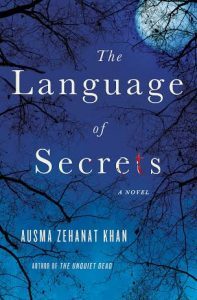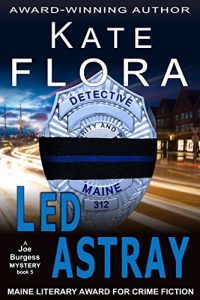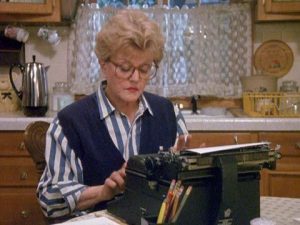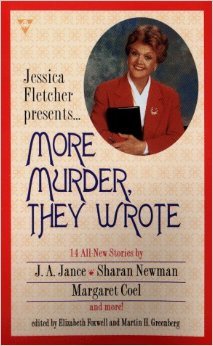Lea Wait's Blog, page 243
December 7, 2016
Christmas Customs — A Shoe-In
Susan Vaughan here. I posted this a couple of years ago, but got such good response I couldn’t resist a repeat.
Christmas customs around the world differ in strange and bizarre ways. In the U.S., Canada, and Great Britain, we’re familiar with the tradition of hanging stockings for Santa to fill. In many other places, footwear also plays a role, but usually not stockings.
Before going to bed, children in France put their shoes by the fireplace. They hope that Père Noel will put small gifts inside. France’s Santa also hangs small toys, nuts, and fruits on the tree. In Holland, children fill their shoes with hay and a carrot for the horse of Sintirklass, while Hungarian children shine their shoes before putting them near the door or a windowsill.

La Befana
In Italy, children leave their shoes out the night before Epiphany, January 5, for La Befana the good witch to fill with treats and gifts. The custom appears to date from when children wore wooden peasant shoes but not why or how it began.
Iceland has many traditions for celebrating the holiday. I won’t go into the history, but nowadays thirteen Santa Clauses, called jólasveinar, or “Yuletide Lads,” come to each town bearing gifts, candy, and mischief. The first jólasveinn arrives thirteen days before Christmas and then the others follow, one each day. A special custom is for children to set a shoe in the window from December 12 until Christmas Eve. If they have been good, one of the “Santas” leaves a gift, but bad children receive not a lump of coal but a potato. After Christmas, the Yuletide Lads leave as they arrived, one each day, making the Icelandic Christmas season last twenty-six days.
The Czech Republic has a wealth of Christmas customs and superstitions, but none for filling children’s shoes or stockings. Instead, I fo und Christmas customs that offer marriage hope to girls in the family. On Christmas Day, an unmarried girl can stand with her back to the door and throw a shoe over her shoulder. If the shoe lands with the toe pointing to the door, she will be married within the year.
und Christmas customs that offer marriage hope to girls in the family. On Christmas Day, an unmarried girl can stand with her back to the door and throw a shoe over her shoulder. If the shoe lands with the toe pointing to the door, she will be married within the year.
Because eighty percent of the population in the Philippines is Christian, Christmas is huge there. For centuries, the bearers of gifts for children have been not Santa but the Three Kings. Brightly polished shoes and clean socks are left on windowsills, for the Kings to fill with gifts as they pass by on their way to Bethlehem. Some children leave straw or dry grass for the camels; if these are gone in the morning, the camels must have been very hungry. Epiphany, the “Feast of the Three Kings,” marks the end of the Christmas celebration.
A very different kind of footwear is prominent in another warm country, Venezuela. In the capital city, Caracas, before young children go to bed on Christmas Eve, they tie one end of a string to their big toe, leaving the other end outside their bedroom window. On Christmas morning, streets are closed off to cars until 8 a.m. for people to roller skate to the early morning mass, and the custom is to tug on any strings still hanging from windows. Ouch. That one could be painful.
I’ll leave you with wishes for a Happy Holiday and with questions for which I do not have answers. I imagine the tradition of filling shoes and stockings with treats and small gifts spread around the world with Christianity, but how did this custom start? Why do shoes and stockings play such a prominent role in Christmas celebrations?
December 5, 2016
Against the Dumbing Down
The opinion that art should have nothing to do with politics is itself a political attitude. (Why I Write—George Orwell)
Knowing that we’re in for seeing plenty of old white guys in the news over the next four years, I’m inspired to go off-topic a little and talk about a crime writer who represents exactly the kind of talent I wouldn’t want to see discouraged, exactly the kind of talent we might not find out about in the monochromatic, single-gender, WASP, and uncritically-certain-of-itself political world we’re trending toward, this next little while.
Ausma Zehanat Khan is the author of The Unquiet Dead, published by St. Martin’s Press/Minotaur Books, and The Language of Secrets.  She holds a Ph.D. in International Human Rights Law and practiced immigration law in Toronto before turning to fiction full time. She’s not from Maine (
She holds a Ph.D. in International Human Rights Law and practiced immigration law in Toronto before turning to fiction full time. She’s not from Maine ( 
It’s Her Face
John Clark apologizing in advance for a long post. It’s something I wrote many years ago. This year has brought more losses of friends than any I can recall., so I’ve been remembering some of the people who stayed with me in spirit. This is the story of one in particular.
I’m a vague shadow blocking the hazy sunlight streaming through the front door. Her face mirrors the mix of feelings inside as she tries to place my voice and decide: Am I expected, or someone who has stopped for a more sinister purpose?
”Good afternoon, Mrs. B, I have brought you new audio books,” I say
Her thin body, most of its remaining flesh puddled around her hips, relaxes and she leans forward eagerly as I pull boxes from the plastic bag, reciting title, author and reader slowly and distinctly.
Mrs. B fumbles for her glasses and holds each container inches from her face, scanning the synopsis, exclaiming over each one. ”Ah, I love Stuart Woods. Tom Brokaw, what a man!”
I listen gracefully to an oft recounted story, her voice full of anger and lament as she recounts the trauma inflicted by a New York who robbed her of her eyesight, one of many such events in her 97 years that might have brought down one of lesser spirit.
She pulls me back to the present, interrogating me about the offerings I have brought today. Mrs. B has two steadfast rules regarding the books I bring: No homosexuality and no abortion. Each time she reiterates them, she pauses, and in her dry Russian accent adds with a chuckle, ”Profanity, I don’t mind, after all I lived for many years in New York.”

Imagine playing here as a child.
Her odyssey would make a wonderful oral history, if only I had the time. I have heard enough to have patience, affection and respect for this woman who now sees the world more with her wisdom and spirit. She motions for me to sit. I move aside some of her knitting and drop softly to the couch. There are countless children on the Boothbay peninsula who have hats and mittens thanks to the endless motion of her knobby fingers.
”How is the library?” she asks. I catch her up since my last visit two weeks ago. She nods and sighs, sharing my lament about lack of space and lack of progress towards a new building. Her conversation circles back to her losses; her eyes, her relationship with her daughter who hides upstairs most of the day, lamenting her own devils. I step around this pitfall. I know her daughter well and like both of these aging women with their European manners and distinct accents. I have witnessed laments flung in both directions, knowing this dance has been going on for more than 60 years and there is little I can do, or that they would accept from me that might change anything. It is an affectionate bond, one that will shatter when Mrs. B. Dies, leaving a gaping hole of silence in this small house nestled in the pines at the far end of an island.
I look at her face as she talks about the escape. I always return to her face. The eyes, more expressive in their sightlessness than those of most who can see. They’re separated by a nose as rugged and angular as the mountains she fled through at the end of World War Two, her ten-year- old daughter in tow. Eyes that have shed a million tears over the years for losses that would eat the soul of lesser women.
Mrs. B was born to Russian nobility, her admiral father a naval hero to the Italian people for his rescue efforts during the Messina earthquake. Her growing years were spent playing with the Czars children until the Bolshevik Revolution when her family fled for their lives,first to Sebastopol, then to Istanbul.

One of Mrs. B’s childhood playmates.
As she speaks, I imagine her father’s struggle to support the family as a dock watchman before being recognized by an Italian naval officer and who offered asylum in Messina.
Mrs. B. pulls me back from my reverie, apologizing as she does numerous times during our chats. Her laments, like those of most elderly people who have lived a rich and important life, are few, but they occupy an increasing space in her head as her mobility and sight have continued to evaporate. I tell her I do not mind, and mean it.
She returns to her strong opinions regarding the War in Bosnia, another area she knows intimately. In between her words, I slide back into her past, remembering the family move from Messina to Yugoslavia. There, many years ago, Mrs. B. fell in love and married Wladimir, a mathematician and engineer. Not long after, their daughter who remains upstairs as we chat, was born.
I watch Mrs. B’s face alternating between outrage and sadness from events and memories unspoken and wonder: wasn’t one desperate dash ahead of an advancing army enough for a lifetime? Not for Mrs. B. She has lived with the uncertain grief of a lost husband for more than half a century since that day when Wladimir disappeared into the Nazi war machine and was never seen again. Circumstances left her no time for grief or lament. At the end of the war, mother and daughter fled across Europe, often on foot, sometimes in cattle cars, surrounded by strangers, every moment filled with the possibility of capture, rape, or death.
She pulls me back to the present. The sun is setting behind Westport Island and I will be late for supper. She apologizes for keeping me. I smile, and remember she cannot see it, so I put it into my words, assuring her I do not mind. On the hour-long drive home, her face lingers in my mind.
Linda answers the phone and motions to me, ”Telephone for you,” her standard way of alerting me that the outside world is intruding on my planned workday again. I immediately recognize the wheezing voice on the other end. Mrs. B. Is in the hospital. Could I find time to stop by and bring her some fresh audio books?
Only the setting has changed. She lifts her head as my shadow falls across her face. It is a tiny bit softer, even though there is additional gauntness. A fall, several months ago has finally overwhelmed her. She apologizes for her weakened voice, the result, she laments of hitting her diaphragm in the edge of a chair as she fell. I recite the authors, titles and readers from this latest batch of audios. I have depleted the library of Stuart Woods, one of her favorites. Mrs. B. Has taught me a lot about being old and blind. It doesn’t matter that you have heard a book before. In the filmy gray world behind her eyes, these are old friends, not something already heard.
Can I do her a favor? Would I buy the Tom Brokaw and Ted Koppel tapes she listened to last month? They have become icons of comfort and integrity in her dark and shrinking world. I agree and help her write out a check for the library. Another integral fact of blindness is the trust she must place in others, having only their voices and prior actions to guide her choices. I promise to return the following week.
A couple weeks have passed when Mrs. B. Calls again, half apologetic, half impatient. She is now in the local nursing home and wondering what has become of her audios. I blush, feeling a wave of guilt. I had forgotten to order them. I do so immediately.
This time, she doesn’t respond until I take her hand and greet her by name. The gauntness has progressed. Where her nose had once been one of the Pyrenees, separating her sightless eyes, it has now become the Matterhorn. She no longer tries to sit and act the part of hostess. She and I share the same unspoken thought. Her days are dwindling. I bring her the Ted Koppel tape which arrived that morning, apologizing for not having both of them. She grips my hand tightly and I can hear the sadness of terminal resignation so unique to the elderly in her voice.
”I will be 97 on March 28th. I have survived two wars, I speak seven languages, I worked as a bookkeeper until I was past 80, I sailed on steamers by myself and am being treated like a child!”
The soft roll of her Rs echoes through the sterile white room as she slumps back, exhausted from her brief diatribe about her present arrangement. After collecting herself, she lists a few simple desires that do not seem outrageous to me. One staff member allows her to have her nail file and scissors, on the next shift they are confiscated. She pays for a telephone in her room, but no one will get a cord that allows her to have it beside her bed. She does not want food heated in a microwave-she can sense a metallic taste and this practice continues over her protests. She wants thin hot cereal in the morning and gets thick hot glop.
As she lists her issues with the staff, I see a brief flash of animation and determination return to her face. It’s the Mrs. B. I have come to love and admire: the feisty, blind, strongly opinionated Russian lady who moved from New York City to Boothbay and settled with her retired daughter on a dirt road at the very end of an island when neither had a car or a drivers license. I hold her hand for a long time, watching her face change as she returns to her memories and her losses. There is a long and not uncomfortable silence we share before I say goodbye and return to work.
The following Friday, I am away at meetings all day. The Tom Brokaw tape arrives. On Saturday, I find it sitting in my chair when I return to work. The day is hectic and I am unable to make the trip to the nursing home. It’s just as well. On Tuesday, when we reopen, I find a thin strip of newspaper taped to the side of my computer screen. It is Mrs. B’s obituary. Her face, the image that followed me whenever I left after a visit, is finally able to relax, no longer required to reflect the pain and sadness of nearly a century of loss, no longer finding itself pulled into twists and scowls of righteous indignation and outrage. The face slowly fades from my memory as the years move on. It was a privilege to watch the face and know the woman whose face it was.
December 2, 2016
Weekend Update: December 3-4, 2016
 Next week at Maine Crime Writers, there will be posts by Brenda Buchanan (Monday) Dick Cass (Tuesday), Lea Wait (Wednesday), Susan Vaughan (Thursday) and Brendan Rielly (Friday).
Next week at Maine Crime Writers, there will be posts by Brenda Buchanan (Monday) Dick Cass (Tuesday), Lea Wait (Wednesday), Susan Vaughan (Thursday) and Brendan Rielly (Friday).
In the news department, here’s what’s happening with some of us who blog regularly at Maine Crime Writers:
Maureen Milliken and Jen Blood will be signing and selling books at the Belgrade Holiday Fair, 10 a.m.-3 p.m., Route 27, Belgrade Lakes, on Saturday (December 3). The first book in Jen’s new Flint K-9 series, The Darkest Thread, was released in October and the second in Maureen’s Bernie O’Dea mystery series, No News is Bad News, came out this summer.

Bruce and Kate along with the owners of Mainely Murders Bookstore at a recent event held at the Kennebunk Free Library.
Kate Flora is delighted to have received this e-mail this week: “It gives us great pleasure
 to inform you that your story, IDA MAE BUYS A CROWN VIC, has been selected for inclusion in BUSTED: ARRESTING STORIES FROM THE BEAT.” It’s always a thrill to have a short story selected for an anthology. This story about a timid wife and mother finding her calling as a police dispatcher has long been a favorite of mine and I’m so pleased it has found a home. Also still celebrating the fact that I have a story, Careful What You Wish For, in Level Best’s newly published collection: Windward
to inform you that your story, IDA MAE BUYS A CROWN VIC, has been selected for inclusion in BUSTED: ARRESTING STORIES FROM THE BEAT.” It’s always a thrill to have a short story selected for an anthology. This story about a timid wife and mother finding her calling as a police dispatcher has long been a favorite of mine and I’m so pleased it has found a home. Also still celebrating the fact that I have a story, Careful What You Wish For, in Level Best’s newly published collection: Windward
Bruce Robert Coffin will be interviewed in studio at WERU-FM 89.9 with Nancy Tancredi as part of Writer’s Forum at 10:00 am on December 8th. Also on December 8 at 6:30 pm he will be speaking at the Falmouth Memorial Library. Letterpress Books will be on hand selling copies of his novel, Among the Shadows, and copies Best American Mystery Stories 2016, featuring Bruce’s short story Fool Proof.
Lea Wait will be at the Unitarian/Universalist Holiday Craft Fair in Brunswick on Saturday, December 3, from 9 until 2. (Across the street from the front of the Curtis Memorial Library, at 1 Middle Street. And in addition to crafts, there’ll be soups, bread, desserts … and Christmas goodies.)
An invitation to readers of this blog: Do you have news relating to Maine, Crime, or Writing? We’d love to hear from you. Just comment below to share.
And a reminder: If your library, school, or organization is looking for a speaker, we are often available to talk about the writing process, research, where we get our ideas, and other mysteries of the business. Contact Kate Flora
Getting a Peek
Bruce Robert Coffin here at the helm of the Maine Crime Writer’s Blog. This month I want to talk a little about one of coolest benefits of being accepted into the writing community. The opportunity to read unpublished manuscripts. Believe me when I tell you that not much compares on a coolness scale. Imagine reading the manuscripts of unreleased novels written by your favorite thriller and mystery writers. So far this year I’ve perused the unpublished works of Kate Flora, Brenda Buchanan, Joseph Sousa, and the latest MWPA Best Crime Novel Award winner Brendan Rielly. See what I mean? Too cool. With writing styles as varied as the hues of autumn, they all succeeded at capturing my imagination with a well-told story. Not only do I get to read their latest work but they actually want my input! The great thing about doing this is that as writers we each have strengths and weaknesses. Some of us write strong dialogue, some wonderful descriptive prose, or great introspective scenes. But like a good golf scramble none of us does it all.
Reading unpublished work allows the writer to have the benefit of other accomplished eyes, with other strengths. Like beta readers on steroids. No matter how many times we read and edit our own writing, things are always overlooked. Some intended punctuation or word that we would swear is there but, in fact, isn’t. A fresh set of peepers always helps put things in proper perspective.
But there is another benefit bestowed when reading unpublished works of accomplished scribes. Reality. It’s like getting a peek behind the curtain where the Great and Powerful Oz pounds out endless words on a MacBook Pro. I see the work before it’s entirely finished. Like a fresh paint job it might have drips or an occasional run, some imperfection that reminds me that great writing doesn’t just happen. It’s hard work! With each keystroke comes possibility. It takes time to formulate and craft worthwhile ideas. A never-ending massage of sentence and paragraph until the exact thing we meant to say begins to take shape. No matter how prolific the author, no matter how many stories or books we’ve penned, none of us gets it right every time. Although, I’m sure I speak for all of us when I say I wish we did. It’s this peek at the work in progress that motivates me to work even harder. The realization that no matter how much we write there is always room for improvement.
Now I suppose your all wondering, how did I like the new works of Kate, Brenda, Joe, and Brendan? I loved them. When will you be able to read them? As soon as they’re ready, my friends. As soon as they’re ready.
November 30, 2016
Murder, She Wrote and Me

Jessica was writing on a manual typewriter, just as I was back then
Kaitlyn Dunnett/Kathy Lynn Emerson here, taking you back into the past—to 1985, to be precise. I thought you might enjoy reading the exchange of letters I had at the time with the Executive Producer of Murder, She Wrote, which was then in its second season. And me? I had two whole books to my credit, only one of them fiction. My letter, printed in full below, is dated November 26, 1985. Keep in mind that some things have changed. We do have train service north of Boston now and some of the information about sheriffs in Maine is no longer 100% accurate. Back then I was a lot younger and very full of myself, with an appalling tendency to sound pompous. I am surprised, rereading this thirty-one years later, that Mr. Fischer bothered to answer me!

Kathy with her first stack of author copies
Dear Mr. Fischer:
As much as I admire your work in MURDER, SHE WROTE and other t.v. mysteries, I find that as a long-time Maine resident and the wife of a deputy sheriff, and as a writer (my THE MYSTERY OF HILLIARD’S CASTLE was just published by Down East Books of Camden, ME), I must point out a few very annoying errors which turn up repeatedly in your series.
 The first concerns law enforcement. Tupper is called the Sheriff of Cabot’s Cove. Sheriff is an elected county office, 99% administrative. Sheriffs generally wear business suits. The men in uniform are deputies. In addition a sheriff’s department may have court officers, investigators, a jail administrator, and a chief deputy. None of these men and women are as stupid as the deputy recently shown searching a lake for a body, and none would use the police radio as he did. 10-codes are used here for the same reasons they are used elsewhere, and just as consistently. Furthermore, neither a sheriff’s department nor a local police force (found only in large towns and in cities) would be involved in a murder investigation. These are turned over to the state police as quickly as possible. In a place the size Cabot Cove appears to be, it is unlikely there would be a police department, let alone a jail. The town would be more likely to have an untrained, semi-voluntary constable with a patrol deputy for back-up.
The first concerns law enforcement. Tupper is called the Sheriff of Cabot’s Cove. Sheriff is an elected county office, 99% administrative. Sheriffs generally wear business suits. The men in uniform are deputies. In addition a sheriff’s department may have court officers, investigators, a jail administrator, and a chief deputy. None of these men and women are as stupid as the deputy recently shown searching a lake for a body, and none would use the police radio as he did. 10-codes are used here for the same reasons they are used elsewhere, and just as consistently. Furthermore, neither a sheriff’s department nor a local police force (found only in large towns and in cities) would be involved in a murder investigation. These are turned over to the state police as quickly as possible. In a place the size Cabot Cove appears to be, it is unlikely there would be a police department, let alone a jail. The town would be more likely to have an untrained, semi-voluntary constable with a patrol deputy for back-up.
 The second point is minor, but annoying to Mainers. Jessica has no accent. Wise move. The other Maine characters would do well to lose theirs, or get it right. Most present day Mainers have watched t.v. all their lives. They sound more like national newscasters than the Silases and Calebs (and Amoses and Ethans) of stereotype. Incidentally, there aren’t many Silases and Calebs, not even on the coast. Harlan, maybe, or Linwood, or a Calvin or two, but most of us have regular names, just like you “foreigners.”
The second point is minor, but annoying to Mainers. Jessica has no accent. Wise move. The other Maine characters would do well to lose theirs, or get it right. Most present day Mainers have watched t.v. all their lives. They sound more like national newscasters than the Silases and Calebs (and Amoses and Ethans) of stereotype. Incidentally, there aren’t many Silases and Calebs, not even on the coast. Harlan, maybe, or Linwood, or a Calvin or two, but most of us have regular names, just like you “foreigners.”
My third objection is also minor. We would love to have passenger train service. Unfortunately, to get any closer to Maine than Boston one must fly or drive or take a bus. And unless Cabot Cove is right on the New Hampshire border, it is probably at least a two hour drive. Maine is a big state. Over half of it is north of Bangor, which is a three hour and more drive from the Portland area. Incidentally, is that the Maine coast you’ve filmed? Much of it looks suspiciously Californian.
I hope you don’t mind these comments. You have a good show, which is very popular in Maine, but it could easily be accurate as well. Since you took the trouble to get a deputy sheriff’s uniform right (but not the lights on the patrol car—we use only blue in Maine) why not fix the few inaccuracies that are left?
I sent this with copies to the other producers, Richard Levinson and William Link. Peter S. Fischer’s reply is dated December 2, 1985:
Dear Mrs. Emerson:
Such a thoughtful and constructive letter certainly deserves an answer in kind and I’ll try to do my best to explain why we do what we do on MURDER, SHE WROTE.
 I’m sure your information on the operation of the various Sheriff’s offices in Maine is accurate. However, slavish accuracy can often get in the way of a good story and we have obviously taken liberties. Our sheriff and our sheriff’s office is as fictional as Cabot Cove itself. In truth, Amos Tupper, in spirit and experience, is much closer to the “untrained, semi-voluntary constable” you mention in your letter. Pleasant, naïve, and totally out of his element when it comes to murder. For the sake of clarity we have taken the liberty of calling him “Sheriff” and giving him the responsibility of clearing up the murder of the week in our fictional town. Yes, it would be more accurate were we to call in the state police, but I think we would lose a lot of fun and audience identification with Jessica’s traditional rival. Certainly it is utter writer’s convenience that Perry Mason always went up against Hamilton Burger and that Burger always lost the case because Mason came up with some clue that a halfway decent police force would have stumbled upon almost immediately. Lt. Trask was not the model of an open-minded, well-informed police lieutenant. Inspector LeStrade was a humorous foil for Holmes—would the stories have been better if he had been Holmes’ intellectual equal? I confess. We bend accuracy to fit our format but we are first and foremost trying to entertain in a lighthearted way. If I thought it inappropriate for our style of show I would not do it.
I’m sure your information on the operation of the various Sheriff’s offices in Maine is accurate. However, slavish accuracy can often get in the way of a good story and we have obviously taken liberties. Our sheriff and our sheriff’s office is as fictional as Cabot Cove itself. In truth, Amos Tupper, in spirit and experience, is much closer to the “untrained, semi-voluntary constable” you mention in your letter. Pleasant, naïve, and totally out of his element when it comes to murder. For the sake of clarity we have taken the liberty of calling him “Sheriff” and giving him the responsibility of clearing up the murder of the week in our fictional town. Yes, it would be more accurate were we to call in the state police, but I think we would lose a lot of fun and audience identification with Jessica’s traditional rival. Certainly it is utter writer’s convenience that Perry Mason always went up against Hamilton Burger and that Burger always lost the case because Mason came up with some clue that a halfway decent police force would have stumbled upon almost immediately. Lt. Trask was not the model of an open-minded, well-informed police lieutenant. Inspector LeStrade was a humorous foil for Holmes—would the stories have been better if he had been Holmes’ intellectual equal? I confess. We bend accuracy to fit our format but we are first and foremost trying to entertain in a lighthearted way. If I thought it inappropriate for our style of show I would not do it.

“Jessica” chose to include one of my short stories in this anthology in 1999
As for the Maine accents, we do our best to get them as right as possible but some actors are better than others. Besides, as you point out, the nation has become more homogenous and we certainly wouldn’t want them all sounding identical. I hope you don’t feel we’re poking fun at Maine and State of Mainers because we’re not—I love New England and the people who live there. We’re just trying to give our viewers a little taste of something besides Southern California. (Although you are right. “Cabot Cove” is located upstate California. Mendocino, to be precise, a small town founded by New Bedford whalers in the mid 1800s using traditional salt box architecture. Shooting in Maine itself would be much too prohibitive, financially. The East Coast unions have seen to that.)
As for train service, again we were aware that it stopped in Boston—but again we wanted to keep a homey flavor to this mythical location. We didn’t want a modern airport nearby and decided to give outsiders access to Cabot Cove by sea, rail and bus. In fact, most of the references since the first episode to travel in and out of Cabot Cove deal with busses.
Finally, I’m having our transportation department fix the lights on Sheriff Tupper’s car. All blue. I promise—at least for the last Cabot Cove show of this season.
Thanks very much for writing. We really do want you to be happy with us.

All in all, a very nice response . . . although as far as I was ever able to tell, they never did fix the lights on the cruisers. What I find most interesting in retrospect is that television and movie producers are still using the same excuses for not bothering to get the details right. Any episode of Castle will illustrate a total lack of regard for actual police procedure. So, dear readers, what do you think? Does this reasoning make sense or would you like to see scriptwriters pay as much attention to accuracy as you expect from those of us who write mystery and crime novels?
 Kathy Lynn Emerson/Kaitlyn Dunnett is the author of over fifty books written under several names. She won the Agatha Award for best mystery nonfiction of 2008 for How to Write Killer Historical Mysteries and was an Agatha Award finalist in 2015 in the best mystery short story category for “The Blessing Witch.” Currently she writes the contemporary Liss MacCrimmon Mysteries (Kilt at the Highland Games) as Kaitlyn and the historical Mistress Jaffrey Mysteries (Murder in a Cornish Alehouse ~ UK in December 2016; US in April 2017) as Kathy. The latter series is a spin-off from her earlier “Face Down” series and is set in Elizabethan England. Her websites are www.KaitlynDunnett.com and www.KathyLynnEmerson.com
Kathy Lynn Emerson/Kaitlyn Dunnett is the author of over fifty books written under several names. She won the Agatha Award for best mystery nonfiction of 2008 for How to Write Killer Historical Mysteries and was an Agatha Award finalist in 2015 in the best mystery short story category for “The Blessing Witch.” Currently she writes the contemporary Liss MacCrimmon Mysteries (Kilt at the Highland Games) as Kaitlyn and the historical Mistress Jaffrey Mysteries (Murder in a Cornish Alehouse ~ UK in December 2016; US in April 2017) as Kathy. The latter series is a spin-off from her earlier “Face Down” series and is set in Elizabethan England. Her websites are www.KaitlynDunnett.com and www.KathyLynnEmerson.com
Alternate Reality #4: Tales of a Ditch Miner
When Kate and I were kids, returnable bottles commanded a hefty two cents apiece. One of my early memories was of she and I sitting on the tailgate of Dad’s 1949 Dodge pickup as he drove slowly up East Sennebec Road. Each time he saw a bottle, he’d stop and we would retrieve it. When we had a sufficient amount, he’d take us up to Appleton where we’d wander around the store as Merton Wadsworth counted our booty. The money was split and usually immediately invested in candy or soda.
Not long after, Maine did away with deposits. By that time I was earning better money raking blueberries or taking care of Berta Dirion’s laying hens after school and on weekends, so I didn’t think much of it. It wasn’t until I returned to Maine after graduating from college that I resumed my career as a ditch miner.
I’ve always loved the idea of treasure, whether in reality, a story or in a computer game. It’s a big part of the allure in entering sweepstakes, but that same feeling exists, albeit on a smaller scale, when looking for returnables. Most people don’t bother, especially younger ones. Old farts like me, however, get a sense of satisfaction at picking up something discarded and turning it into cash. Heck, five cents is five cents, more if you find a liquor bottle (then it’s fifteen cents). The government can’t tax what you take in, the roadsides are a tiny bit cleaner and exercise is generally involved. Over the years, I’ve developed a ritual: Pick up one can/bottle a day and good luck will eventually accrue.
When Sara and Lisa were little, we replicated (with a safer seating arrangement) what Dad did with Kate and I. We’d make out like gangbusters right after snow melted, revealing all the ones tossed over a three month span. The money accumulated, coupled with money from refunding, went into mutual funds for the girls. By the time we needed to tap it, there was enough (thanks to a bull market) to cover a significant part of their undergraduate expenses.

Caps, Ya Say?
I still try to snag one a day and now that I’m retired, I sometimes park my car and walk a ways on both sides of a back road. For every one I see while driving, there are generally four more I can’t see. During my forays, I’ve been kicked off I-95 three times by state troopers, found a wallet with no identification, but containing a dollar bill, found more working disposable lighters than I can count and even found a couple music CDs.
Sometimes, I come across something that’s more valuable than meets the eye. Twenty years ago, I found a V-8 can that had a contest form on the inside. I filled it out, sent it in and a month later got a check in the mail for $1,000. Another time, I was taking care of Mom after eye surgery. When she took a nap, I grabbed a plastic bag and worked the road from one end of the property to the other. Halfway down the road, I spotted a baggie sticking out of a pile of leaves. Inside was a large plastic needle and a note informing me I’d found a needle in a haystack. Birds & Blooms Magazine had sent people in all 50 states out to deposit these along roadsides to see how many would be picked up by people cleaning up trash. I mailed mine in and got $50.00 for my effort.
Over the past fifteen years, bottles from Coke and Pepsi products have included something above and beyond the nickel deposit, codes that can get cool stuff. Coke started it with their My Coke Rewards program. Codes were printed under caps that could be entered online for prizes. Pepsi jumped in and codes from their products could be redeemed for movies on VHS (this was the late 1990s). Library patrons got behind the idea while I was working in Boothbay Harbor and we were able to add close to 100 new videos to the collection.

Coke points got tickets to Loudon twice for Mr. Roger and me.
When I started at the Hartland Public Library, the codes could be used to enter sweepstakes for better prizes. One summer, we were able to give young readers over $1000 worth of bikes, MP3 players and music CDs thanks to Pepsi. Best of all, one cap entry netted Beth and I a weekend trip to Jacksonville, FL., where we had luxury box seats for a Jaguars/Browns football game. We also spent a morning at the beach and another at the Jacksonville Zoo. More recently, we used Coke points to get magazine subscriptions for the library.
Anyone can set up an account to use Coke caps and codes from 12 and 24 packs of any of their products. My current favorite redemption is for Amazon.com gift cards,
In the course of ditch mining, I’ve learned a few interesting things. The best time to work a roadside is Sunday morning because all the drunks toss more redeemables on Saturday night. Interstate off-ramps are good too as are dirt roads any time. People are creatures of habit. When I used to work the property in Union, I found the same contents in a paper bag in almost the same spot every weekend: 2 empty Bud bottles and a Big Mac wrapper. Another thing I’ve learned, don’t ignore discarded instant scratch tickets. A guy named Leroy clued me in on the fact that many people are a bit too hammered to know whether they’ve got a winner. (He said the best places to look for them is in convenience store parking lots on Sunday mornings.) I’ve found a few winners myself.
Looking for a funky revenue stream, exercise and an occasional surprise? Ditch mining might be for you.
November 28, 2016
Okay, okay. I do like lighthouses, but never lobster.
We Maine Crime Writers are frequently asked about setting. Maine, famously, is a mystery and crime writing hot spot, though actual murders in the state average between 20-25 a year. So the topic of Maine as setting for our books is broached at probably every event where some of us are on a panel.
I’ve frequently said that my Bernie O’Dea mystery series, which takes place in northern Franklin County, does not feature the lobster and lighthouses that many from away associate with Maine. Franklin County stretches from a little north of Augusta west and north to the Quebec border, so unless those are Sandy River lobsters and the lighthouse is on Flagstaff Lake, they’re not happening.
Some have taken that to mean I don’t like lighthouses and lobster. While I will never understand the lure of lobster — a lot of work for something that looks like a giant bug, has to be boiled alive to taste good and basically takes like good haddock once you can get to the meat — I do like lighthouses and Maine’s beautiful coast.
I’ve temporarily moved to South Portland and through the miracle of the iPhone almost daily see something coastal I need to snap a photo of.
We often say here at Maine Crime Writers we are lucky as hell to live and write in the great state of Maine. So here’s some proof. Almost all of these were taken within walking distance of my home. The ones that weren’t are scenes I see almost daily.
Enjoy!

Portland Head Light at Fort Williams in Cape Elizabeth. Known as the most photographed lighthouse in the world. Even if it’s not true, it’s easy to believe.

The view from the Hannaford supermarket parking lot in South Portland. Looks different every day. Shopping carts optional.

Yarmouth on the Royal River, where I have a co-working space for my writing habit.

This is the scene in Yarmouth from behind Think Tank Coworking, where I write.

Portland Head Light from the cliff trail at Fort Williams in Cape Elizabeth.

Portland Head Light from Simonton Cove, right down the street from where I live. Gee, I guess it’s my most photographed lighthouse even if it’s not the most photographed one in the world. Which it is.

Spring Point Lighthose from the kite-flying place near where I live. That field was part of a massive Navy shipyard during World War II.

The Royal River in Yarmouth as seen from Route 88. Yeah, and more of my cemetery obsession. I take the scene route home from the co-working space if I leave when it’s light out, just so I can see this view.

Munjoy Hill in Portland as seen from South Portland.

Simonton Cove from the walking trail near Southern Maine Community College in South Portland.

Bug Light as seen from Simonton Cove.

Spring Point lighthouse, with Fort Gorges in the background.

Moody Beach in Wells off in the distance, as seen from Route 1 in Wells. I also have a cemetery obsession. More on that another time.
EVENT: Saturday, December 3, Maureen Milliken and Jen Blood will be signing and selling books at the Belgrade Holiday Fair, 10 a.m.-3 p.m., Route 27, Belgrade Lakes. The first book in Jen’s new Flint K-9 series, The Darkest Thread, was released in October and the second in Maureen’s Bernie O’Dea mystery series, No News is Bad News, came out this summer.
Maureen Milliken is the author of the Bernie O’Dea mystery series. Follow her on Twitter at@mmilliken47 and like her Facebook page at Maureen Milliken mysteries. Sign up for email updates at maureenmilliken.com.
November 27, 2016
50 Writers Offer Advice to the Newly Published
Kate Flora: When I asked my Facebook friends for advice for newly published writers, my lovely friend Patricia Smiley immediately offered this advice: If it’s not too late…RUN, RUN AWAY!
But if you’re not inclined to run? Here’s a little of my advice, followed by advice from dozens of experienced writers. Never leave home without a case of your books in the trunk. Seriously. Not just for your first book, but for EVERY book. In the midst of events, promotion, and writing the second book, take the time to celebrate the joy of publication, There is never again a moment like the arrival of the first book. And of course, there’s be nice to people. We’re a small community. Much of this is echoed in the comments below.
On the Importance of Celebration and Balance, or Enjoy the Moment and KEEP WRITING
Steven Axelrod: Lower your expectations, and get that next book written.
Linda Gordon Hengerer: Keep writing. Don’t let the process stop the next book.
Lisa Alber: You only get one debut novel experience — remember to enjoy the ride!
Janet Schnell Koch: Don’t read reviews. The bad ones will depress you and you won’t believe the good ones.
Michael Broadway: Now that you have one published, it’s time to start writing the next one.
Joyce Yarrow: Relax and rejuvenate – read the books you didn’t have time to read while writing – and then get back to work. If your publisher did not send out ARC’s, mail a few out to reviewers and set up a few readings/signings at bookstores. Don’t try to master marketing techniques unless that’s your chosen field – remember – you are a writer!
Wendy Hornsby: Keep writing.
Ellen Byron: Enjoy every minute of it. There’s only one first time.
Carl Johnson: I would give three pieces of advice, ENJOY! ENJOY! ENJOY! It will never better than your first event but they’ll all be fun if you let yourself relax and enjoy the people and take pleasure in the interest and the enjoyment they get from your book. Be seen as much as you can BUT don’t let the book, or books, become your life. The old saying ‘All work and no play, etc.’ applies to writers as much as anybody. If you become dull, your books will, too.
Marni Graff: Moderate your marketing work to allow WRITING time or you won’t have anything else to sell!
Daniel Palmer: My dad’s advice to the question of what next was always the same: write another book.
Nancy Myer: Never give up! Rejection letters are part of the process.
John DeDakis: Don’t give up
Wendy Mnookin: Take a deep breath, and write.
Rick Helms: Write. Submit. Repeat.
J.M. Cornwell: Good days, bad days, blah days, no matter what, keep writing. Writing improves when you write every day, and some days nothing good seems to end up on the page. Even so, don’t stop writing.
Ilene Schneider, Rabbi-Author: Grow a thick skin against criticism. But don’t get overly confident about success. Don’t expect to get rich.
Ray Salemi: Don’t let it get to you.
Steven Axelrod: Lower your expectations, and get that next book written.
Linda Gordon Hengerer: Keep writing. Don’t let the process stop the next book.
Ray Salemi: Quit your day job. Right now. Today.
Devon Ellington: This is just the start of the marathon. This is the last time you can take as long as you want to finish a book or use “life” as an excuse not to write.
Vaughn Hardacker and Ray Anderson say: Don’t quit your day job, while Ray Salemi says quit your job at once. Ray is joking. See Ilene’s comment, above.
Sheila Lowe: The only thing better than the arrival of the first book is the arrival of the second book :)
On the Business of Writing:
Reed Farrel Coleman: Getting published isn’t the end point, but the starting point. Figure out how to sustain the momentum.
Brendan DuBois: As much as it pains me to say this, don’t trust your editor, and keep pressure on your agent. It’s *your* career. Take responsibility for it. Don’t believe the promises and hype. Push to promote. And keep writing, writing, writing.
Lea Wait: Thank your agent and editor … and keep in touch. Let them know about your promotional schedule and send copies of any local articles/reviews they might not have seen.
Elizabeth Black: The money flows from the publisher to the writer, never the other way around. Never pay to have someone publish your work. Vanity presses and scams are out there so watch out for them. That said, it is always a good idea to hire a good editor to read your book or do a trade with another writer you respect for substantive editing and grammar/spelling editing. Editors see things you miss since you’re very close to your work.
Bonnie Riley: As a website support person, I would urge you to let your fans know what is going on, especially when and where you will be making appearances and the names of all your books (by series, if that applies) and in what order they might ideally be read.
Gale Borger: Congratulations, and your job has only begun. You are the one who needs to market. You may not get to be rich and famous, but that is not why we write in the first place. We are compelled. Keep this feeling of joy and accomplishment close to your heart, it is your reward. Never stop writing, and the mean people out there can piss up a rope.
Patricia Gulley: Don’t spend too much money on those 1 or 3 month Twitter blasts.
Robert Walker: Luck plays the largest role in publishing. Lightening strikes are rare, and while it happens, you can count on it as much as you can count on winning the lottery. As in any entertainment business, there are a few stars at the top and thousands of authors never make star status in the category they’ve chosen to write in. The best you can do is to write the best book you can after the disappointment sure to come with first publication when you learn your publicist has 300 books this month to ‘publicize’ and only two of these have a budget as they are books by the stars already successful. This sounds pessimistic but I am obviously an optimist since I am working on my 67th title regardless of status and rewards and remuneration.
On modesty, humility, and the crime writing community:
Susanna Calkins: Don’t shut the door behind you. GIVE BACK to the writing community.
Dru Ann: Be kind to all readers – even if they may not read your book
Mysti Berry: You’ll spend about a year on a serious ego trip without realizing it. Very few writers escape this period. Try not to do too much damage until your ego deflates again.
Michelle Hoover: Keep your humility. You aren’t saving the world, but hopefully you’ve written a great damn book.
Sue Ann Jaffarian: Don’t be an arrogant ass. Yes, your book got published, but this is a long game and you need to develop relationships as well as sell books to stay in it.
On Promotion:
Bill Hopkins: Series sell, so write a series. And make yourself a facebook page.
Terry Shames; So much good advice. One more: Promote other writers whose work you admire. It gives you a chance to get your mind off your own success/failures, and gives you something to talk to readers about.
Les Roberts: When my debut novel appeared (in 1987), it had been named the very first winner of the “Best FIRST Private Eye Novel” contest. I got calls from the L.A. Times,m Los Angeles Magazine, The Washington Post, The N.Y. times and many others, for interviews, photos, etc. So when my second book came out one year later, I sat back and waited for all those publications to call again. I’m still waiting. I can count on my fingers the number of authors whose first books were BLOCKBUSTERS and have remained famous for 30 years or more, and I’d still have a few fingers left over. Writing the book is only HALF the job. The rest of it is marketing, promoting oneself. If you hate that part of the job, start learning to cheerily say “Did you want fries with that?”
Mary Feliz: Get all your promotional ducks in a row as early as possible, and write everything down so that you can do it again for Book 2. All purpose reply to any book feedback, positive or negative, is “Thank you so much!” Don’t feed the trolls. And (hopefully you’ve been doing this all along) GIVE BACK! And don’t be afraid to approach librarians and bookstores to find out how you can help them. Helping them helps you and it turns out they don’t eat authors for breakfast. People in libraries and bookstores actually tend to like books and authors. Fancy that!
Marylee MacDonald: Start an email list so that you can regularly stay in touch with readers. I like ConvertKit and GetResponse. They’re easier than AWeber ànd Mail chimp.
Ramona DeFelice Long: If you want to do public readings, think out of the box. We sold a lot of anthologies at museums and historical sites after readings.
Maureen Milliken: Don’t stop and rest on your laurels. Keep hustling and writing, because that first book wears off fast out there (unless it’s To Kill a Mockingbird)
Mary Harris: “Shameless Promotion for Brazen Hussies,” a Sisters in Crime publication available for $1.99 ebook version. Money well spent! Shameless Promotion for Brazen Hussies by Roberta Isleib, ed. (eBook) – Lulu
LULU.COM
Lori Avocato: Contact all kinds of clubs and libraries in your area to do a talk. If your book is about golf, contact the golf clubs. Also, carry business cards everywhere and leave them with your bill in a restaurant and tell everyone you meet that you are a published author–and say, “Here, let me give you one of my cards.” Don’t say “Do you want one!”
Ritter Ames: Spend as many hours per day marketing as you do writing, and that doesn’t mean spending all your marketing time on Facebook–LOL!
Peggy Northrop: A very smart author and PR genius (thank you Beth Feldman ) told me “Every book is a startup” and it’s so true. If your book isn’t getting attention from your publisher, it’s not unusual or personal. The most successful authors keep marketing, speaking, writing blog posts with links to their books, for years. Another friend finally had a bestseller after ten years of promotion. An audience rarely magically “finds” you — you have to introduce yourself.
November 25, 2016
Weekend Update: November 26-27, 2016
 Next week at Maine Crime Writers, there will be posts by Kate Flora (Monday) Maureen Milliken (Tuesday), John Clark (Wednesday), Kaitlyn Dunnett/Kathy Lynn Emerson (Thursday) and Bruce Coffin (Friday).
Next week at Maine Crime Writers, there will be posts by Kate Flora (Monday) Maureen Milliken (Tuesday), John Clark (Wednesday), Kaitlyn Dunnett/Kathy Lynn Emerson (Thursday) and Bruce Coffin (Friday).
In the news department, here’s what’s happening with some of us who blog regularly at Maine Crime Writers:
December 3, Lea Wait will be signing her books at the Unitarian Universalist Church Holiday Fair in Brunswick, Maine (across from the library) from 9 until 2. She’s also excited that her Shadows on a Morning in Maine is included on a list of Maine books on this month’s cover of Portland Magazine !
!
Saturday, December 3, Maureen Milliken and Jen Blood will be signing and selling books at the Belgrade Holiday Fair, 10 a.m.-3 p.m. The first book in Jen’s new Flint K-9 series, The Darkest Thread, was released in October.

The logo for Crime&Stuff, the podcast produced by Maureen and Rebecca Milliken that debuts next week.
Maureen, inspired by this year’s Crime Bake, has also given in to her sister Rebecca’s constant prodding and the two of them are producing a podcast focusing on crime, both in the news and in fiction. The first episode of Crime & Stuff drops next week and you can find it on iTunes or through the podcast’s website, Crimeandstuffonline.com, which should be up and running by Sunday. They also have a Facebook page, Crime & Stuff, and will be tweeting from @crimeandstuff. Feel free to like them on Facebook, follow them on Twitter and subscribe to the podcast.
They’re not professional broadcasters and not investigating or solving crimes, just taking a topic in the news or the mystery world each week, finding out as much as they can about it and running with it. They’d like to think it’s the podcast you’d do if you didn’t have better things to do. Check it out.
An invitation to readers of this blog: Do you have news relating to Maine, Crime, or Writing? We’d love to hear from you. Just comment below to share.
And a reminder: If your library, school, or organization is looking for a speaker, we are often available to talk about the writing process, research, where we get our ideas, and other mysteries of the business. Contact Kate Flora
Lea Wait's Blog
- Lea Wait's profile
- 509 followers





